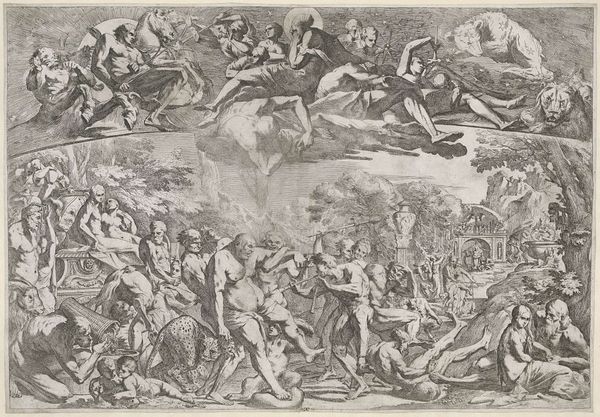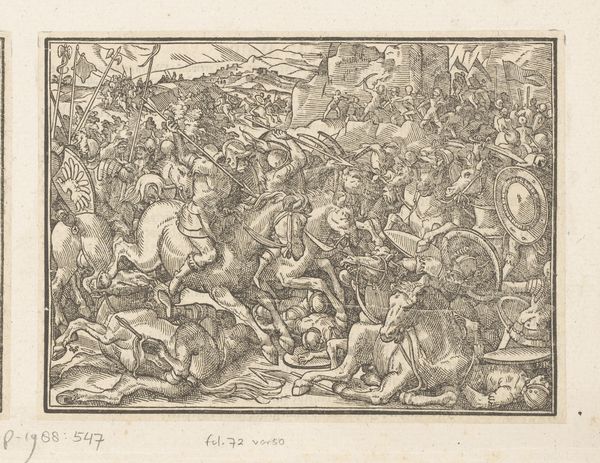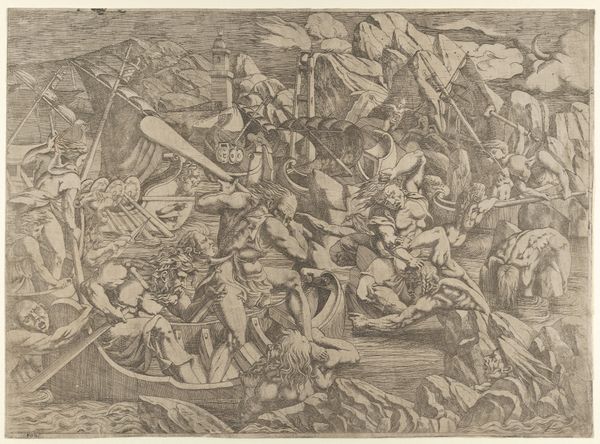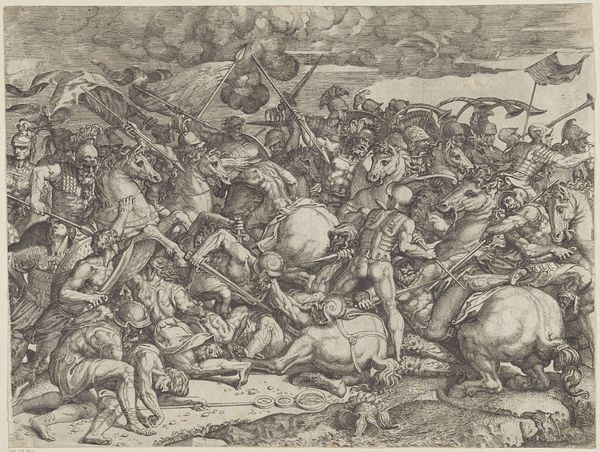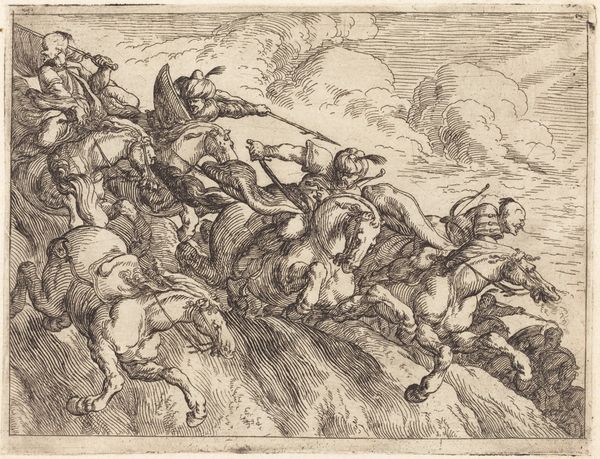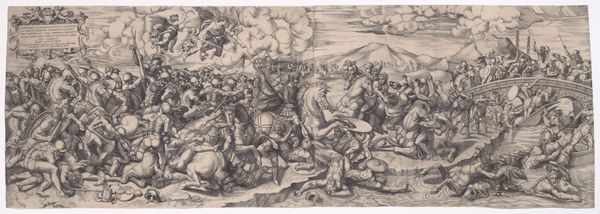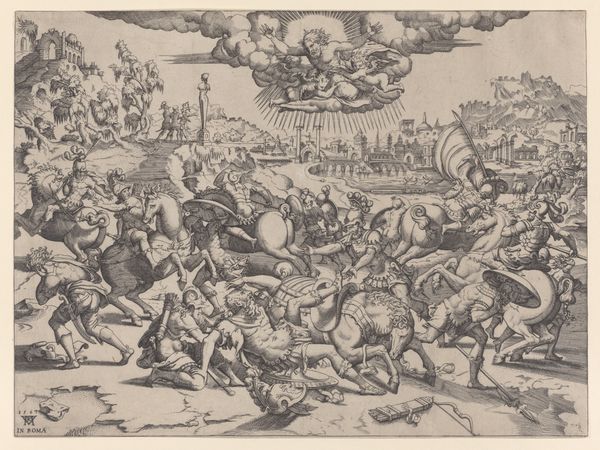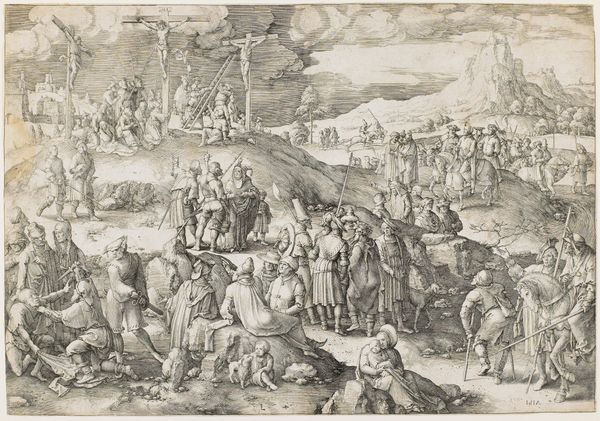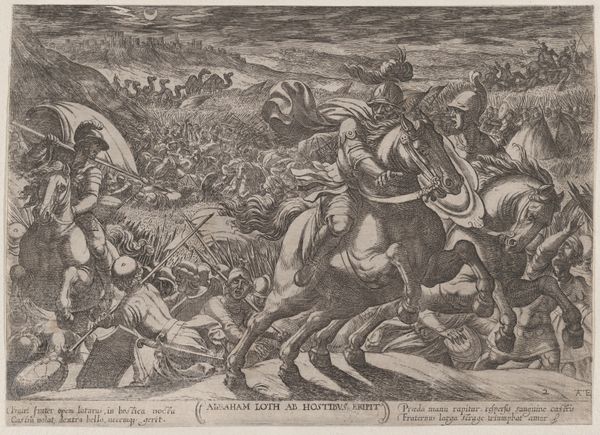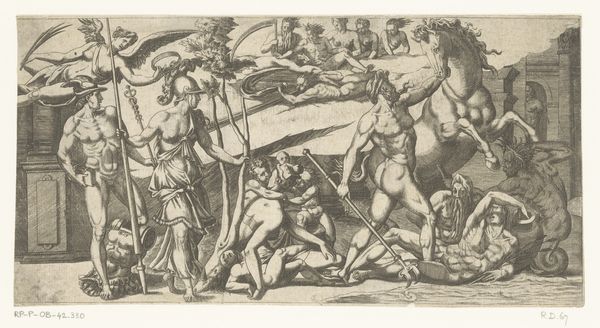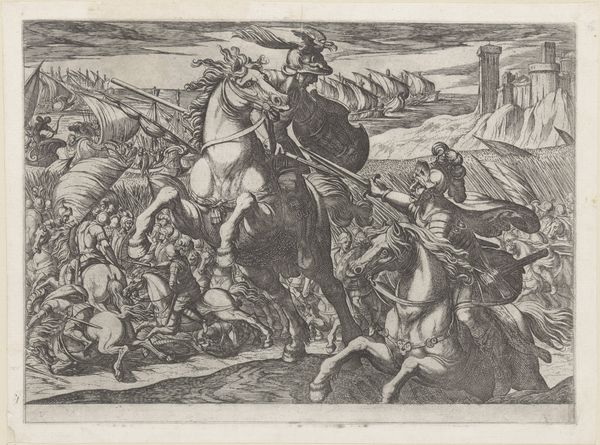
Conversion of Saul, from Michelangelo's fresco in the Pauline Chapel at the Vatican 1540 - 1550
0:00
0:00
drawing, print, engraving
#
drawing
#
ink drawing
#
pen drawing
# print
#
landscape
#
mannerism
#
figuration
#
horse
#
history-painting
#
academic-art
#
engraving
Dimensions: Sheet: 16 7/8 x 21 1/8 in. (42.9 x 53.7 cm)
Copyright: Public Domain
Curator: Here we have Nicolas Beatrizet's "Conversion of Saul," an engraving created sometime between 1540 and 1550 after Michelangelo's fresco in the Pauline Chapel at the Vatican. Editor: My initial impression is dominated by its energy. The scene feels almost chaotic, figures are intertwined and there’s a real sense of drama. What stands out to you? Curator: The composition itself. Beatrizet masterfully translates Michelangelo’s original work into a black and white print, losing the color yet retaining the intense movement and emotion. Consider that prints like this were instrumental in disseminating artistic ideas during the Renaissance. It made the art more publicly accessible. Editor: Indeed. And if we examine the figures, there's an unmistakable Mannerist influence—the exaggerated musculature, the almost theatrical poses. Even the divine light feels weighty. It suggests a deep internal struggle on Saul’s part, beyond the literal blinding. I also wonder about the symbol of the horse: could it stand for unbridled earthly power and its subjection? Curator: That’s insightful. I agree that the Mannerist style serves the emotional content well. From a historical perspective, prints such as these helped solidify Michelangelo’s reputation and impact artists across Europe. We shouldn't underestimate the power of reproductive prints in the 16th century art world. Editor: It seems as though even converted to an engraving, it conveys themes that stretch back centuries. The image also gives life to archetypes. Curator: Absolutely. Seeing it through your lens, I appreciate the layers of interpretation it holds beyond its historical function as a disseminator of artistic styles. Editor: And considering your angle has underscored how vital it was that these Renaissance artistic visions were made accessible to an expansive, curious public.
Comments
No comments
Be the first to comment and join the conversation on the ultimate creative platform.
